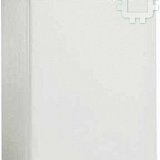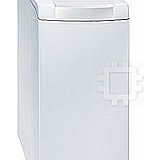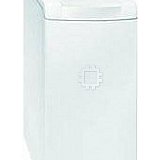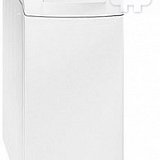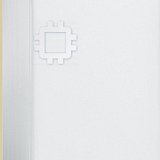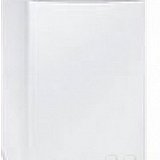Ariston AVTL 109: инструкция
Характеристики, спецификации
Инструкция к Стиральной Машине Ariston AVTL 109

Instructions for use
WASHING MACHINE
Contents
GB
Installation, 2-3
GB
ES
PL
CIS
Unpacking and levelling, 2
Electric and water connections, 2-3
English, 1
Polski, 13
ÐÓÑÑÊÈÉ, 25
The first wash cycle, 3
Technical details, 3
Washing machine description, 4-5
ES
CZ
HU
Control panel, 4
How to open and shut the drum, 5
Español, 37
Èeský, 49
Magyar, 61
Leds, 5
Starting and Programmes, 6
Briefly: how to start a programme, 6
Programme table, 6
Personalisations, 7
Setting the temperature, 7
Setting the spin cycle, 7
Functions, 7
Detergents and laundry, 8
Detergent dispenser, 8
Bleach cycle, 8
Preparing your laundry, 8
AVTL 109
Special items, 8
Woolmark Platinum Care, 8
Precautions and advice, 9
General safety, 9
Disposal, 9
Saving energy and respecting the environment, 9
Care and maintenance, 10
Cutting off the water or electricity supply, 10
Cleaning your appliance, 10
Caring for your appliance door and drum, 10
Cleaning the pump, 10
Checking the water inlet hose, 10
Cleaning the detergent dispenser, 10
Troubleshooting, 11
Service, 12
Before calling for Assistance, 12
1

Installation
Keep this instruction manual in a safe place for
loosening the adjustable front feet (see figure); the
GB
future reference. Should the appliance be sold,
angle of inclination, measured according to the
transferred or moved, make sure the instruction
worktop, must not exceed 2°.
Levelling your appliance correctly will provide it with
manual accompanies the washing machine to inform
stability and avoid any vibrations, noise and shifting
the new owner as to its operation and features.
during operation. If it is placed on a fitted or loose
carpet, adjust the feet in such a way as to allow
Read these instructions carefully: they contain vital
enough room for ventilation beneath the washing
information on installation, use and safety.
machine.
Unpacking and levelling
Putting your appliance in place and moving it.
If your washing machine
Unpacking
is equipped with a
special set of retractable
1. Unpack the washing
wheels you can easy
machine.
move it. To lower the
wheels and thus move
2. Check whether the
the appliance effortlessly,
washing machine has
just pull the lever,
been damaged during
situated on the left-hand
transport. If this is the
side beneath the base.
case, do not install it
Once the appliance is in
and contact your
the required position, put
the lever back in place. The washing machine is now
retailer.
firmly in place (see figure).
3. Remove the four
protective screws and
the rubber washer with
Electric and water connections
the respective spacer,
situated on the rear of
Connecting the water inlet hose
the appliance (see
figure).
1. Insert seal A into the
end of the inlet hose and
4. Seal the gaps using the plastic plugs provided.
screw the latter onto a
5. Keep all the parts: you will need them again if the
cold water tap with a 3/4
gas threaded mouth (see
washing machine needs to be moved to another
figure).
location.
A
Before making the
connection, allow the
Warning: should the screws be re-used, make sure
water to run freely until it
you fasten the shorter ones at the top.
is perfectly clear.
Packaging materials are not children's toys.
2. Connect the other end
of the water inlet hose to
the washing machine,
Levelling
screwing it onto the
Your machine may make a considerable amount of
appliance's cold water
inlet, situated on the top
noise if the two front feet have not been adjusted
right-hand side on the rear
correctly
of the appliance
1. Install the washing
(see figure).
machine on a flat sturdy
3. Make sure there are
floor, without resting it
no kinks or bends in the
up against walls,
hose.
furniture cabinets or
other.
The water pressure at the tap must be within the
2. If the floor is not
values indicated in the Technical details table
perfectly level, compen-
(on the next page).
sate for any unevenness
If the water inlet hose is not long enough, contact
by tightening or
a specialist store or an authorised serviceman.
2

Connecting the drain hose
GB
Connect the drain hose,
When the washing machine is installed, the main
without bending it, to a
socket must be within easy reach.
draining duct or a wall
drain situated between
Do not use extensions or multiple sockets.
65 and 100 cm from
65 - 100 cm
the floor;
The power supply cable must never be bent or
dangerously compressed.
The power supply cable must only be replaced by
an authorised serviceman.
Warning! The company denies all liability if and when
alternatively, place it
these norms are not respected.
over the edge of a
basin, sink or tub,
The first wash cycle
fastening the duct
supplied to the tap (see
Once the appliance has been installed, and before
figure). The free end of
you use it for the first time, run a wash cycle with
the hose should not be
detergent and no laundry, setting the 90°C
underwater.
programme without a pre-wash cycle.
We advise against the use of hose extensions; in
case of absolute need, the extension must have the
same diameter as the original hose and must not
Technical details
exceed 150 cm in length.
Model
AVTL 109
40 cm wide
Dimensions
85 cm high
Electric connection
60 cm deep
Before plugging the appliance into the mains socket,
Capacity
from 1 to 5 kg
make sure that:
Electric
voltage 220/230 Volts 50 Hz
the socket is earthed and in compliance with the
connections
maximum absorbed power 1850 W
applicable law;
maximum pressure 1 MPa (10 bar)
Water
minimum pressure 0.05 MPa (0.5 bar)
the socket is able to sustain the appliance's
connections
drum capacity 42 litres
maximum power load indicated in the Technical
details table (on the right);
Spin speed
up to 1000 rpm
Control
the supply voltage is included within the values i
programmes
programme 3; temperature 60°C;
ndicated on the Technical details table
according to
run with a load of 5 kg.
(on the right);
IEC456 directive
the socket is compatible with the washing
This appliance is compliant with the
machine's plug. If this is not the case, replace the
following European Community
Directives:
socket or the plug.
- 73/23/CEE of 19/02/73 (Low
Voltage) and subsequent amendments
The washing machine should not be installed in an
- 89/336/CEE of 03/05/89
(Electromagnetic Compatibility) and
ServiceTroubleshootingPrecautions CareProgrammes DetergentsInstallation Description
outdoor environment, not even when the area is
subsequent amendments
sheltered, because it may be very dangerous to
- 2002/96/CE
leave it exposed to rain and thunderstorms.
3

